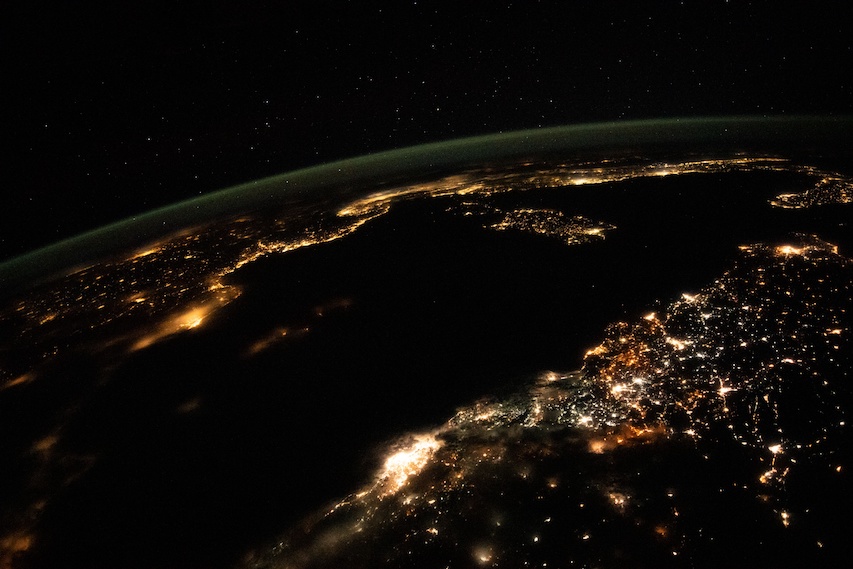Access Partnership Analyst Suarez Sees Opportunity in Risk-Averse Environment

Photo: NASA image of Earth taken from the International Space Station
The current global economic climate may prove challenging for the satellite ecosystem, as rising interest rates and fear of a recession may dampen some startup activity as investors are more risk averse, says Ivan Suarez, director of Space & Spectrum Policy for Access Partnership. Suarez recently spoke with Via Satellite about a number of key issues facing the industry.
“Lesser funding could also translate to less satellite launches, although it seems unlikely given how busy the launch market is. I am more optimistic though. In 2023 a challenging economic situation could be an opportunity – a point wherein market consolidation may be the answer. 2022 ended with some important partnerships announced. Even more important, this is the time for governments to step in, especially those space faring countries that would double up on innovation,” he says.
In terms of investment into the sector, Suarez pointed to the decline in space investment in 2022. While rising interest rates were a factor, Suarez said financing right now is entering a more risk-averse phase.
“Sectors with proven business models and existing revenue or government contracts attracted the most investment during the 2022, reinforcing that notion of a risk-averse environment. Notably, satellite analytics, Earth observation (EO), and data analysis saw significant investment in the fourth quarter of 2022 accounting for almost half all investment in the space industry during the quarter,” Suarez says. He believes that 2023 will not get back to the same investment pace of 2021, but that the industry could still see a vibrant and successful space market in 2023, and more financing compared to 2022.

Ivan Suarez, Access Partnership
One area where Suarez is bullish is the space economy, a growing area of interest and investment. “Despite current spectrum challenges, if we focus on the numbers the answer is evident: the industry expectations for the long-run are around 5% growth for the global space sector to continue until 2030 ($587 billion as per OECD data), while the satellite internet industry is expected to in increase in size, reaching $10.5 billion in the next five years. The factors that may determine an early success for the space economy are varied, but I would certainly highlight that regulatory certainty and administrative agility, and increasing demand and government support to satellite-based services are among the most critical.”
Another area of focus is the satellite-to-cell market which has been front and center. Suarez called Apple’s announcement of satellite connectivity for the iPhone 14 “revolutionary,” and a catalyst, as since this announcement, we have seen announcements from other players along similar lines.
However, direct-to-handset providers are in a regulatory gray area for the most part, Suarez says. He says it is a unique market where there are currently no direct regulations in place protecting or limiting direct-to-handset operators. However, he points to movement toward this with the FCC’s recent announcement on proposing a regulatory framework for a single network future.
How direct-to-handset interacts with the wireless community will largely depend on the nature of the service and how it is provided.
“For example, Apple’s iPhone 14 provides direct-to-handset functionality through dedicated MSS [mobile satellite service] spectrum and only for contacting emergency services. This has no direct competition with existing wireless providers. AST SpaceMobile instead [plans to provide] satellite connectivity to smartphones through existing mobile spectrum bands and providing services in competition with traditional terrestrial wireless providers.”
Suarez believes the relationship between wireless providers and direct-to-handset providers need not be a hostile one. “It has long been noted that terrestrial service providers struggle to provide universal connectivity owing to many areas being either practically or economically unfeasible for infrastructure investment. Additionally, sectors like IFC and maritime are completely shut off from terrestrial wireless providers. direct-to-handset providers can service these markets without directly competing with terrestrial wireless providers. It also serves as backup when terrestrial networks are damaged, destroyed, or otherwise inoperable,” he adds.
Space sustainability is another area where regulations are changing. Suarez says thanks to increased satellite build quality and deorbiting ability, coupled with advancements in software tracking space debris, he believes missions are more sustainable now than ever before.
But, he adds a warning: “These investments are however costly and, if not mandatory, they could be avoided by smaller operators, putting the whole ecosystem at risk. Regulations mandating deorbiting capabilities, build quality and avoidance mechanisms could all make space sustainability feasible despite the increasing launches of megaconstellations.”